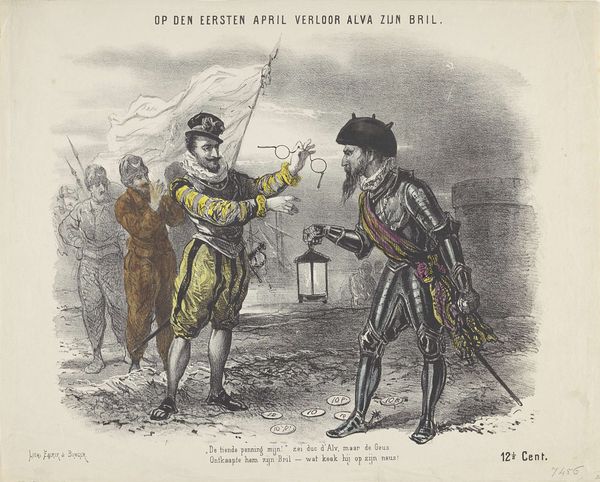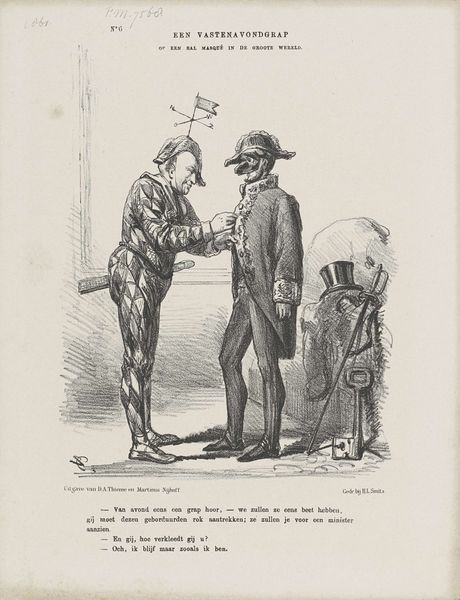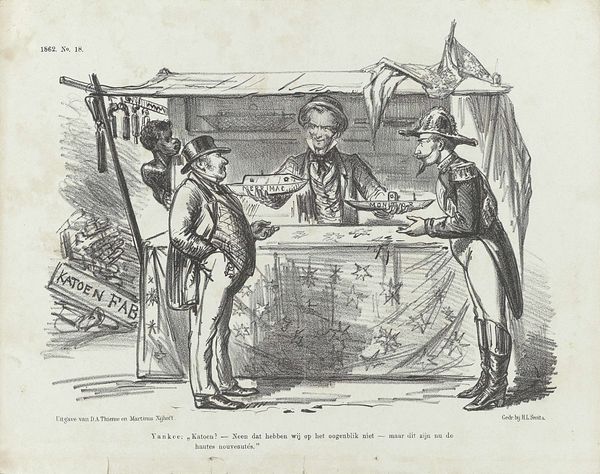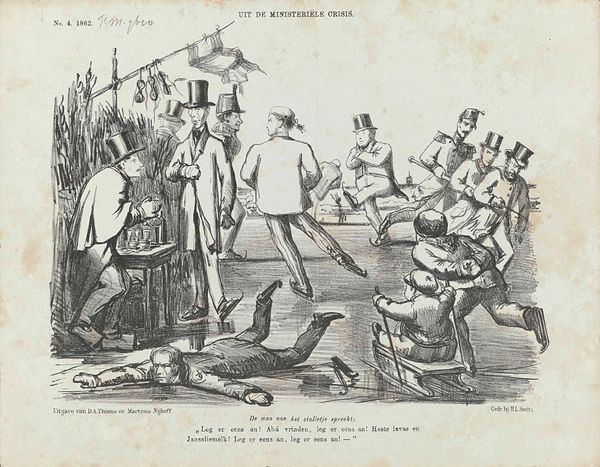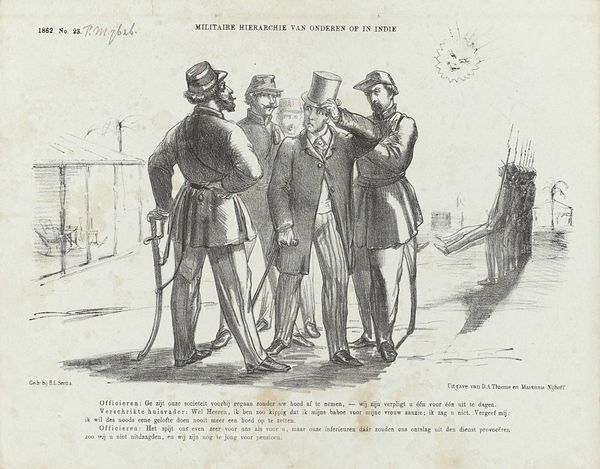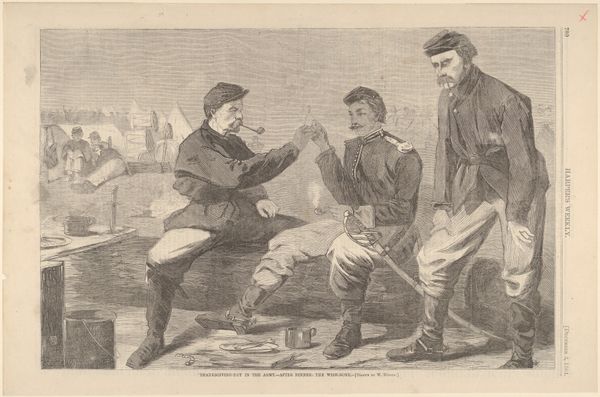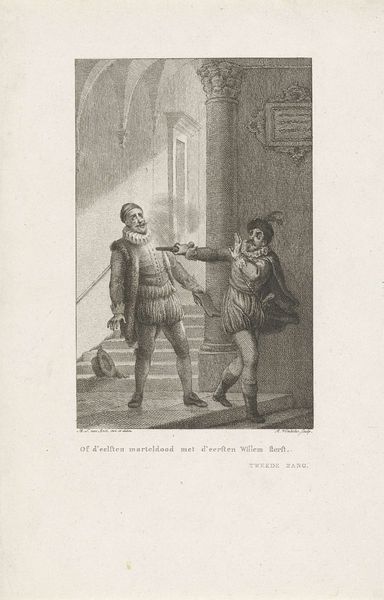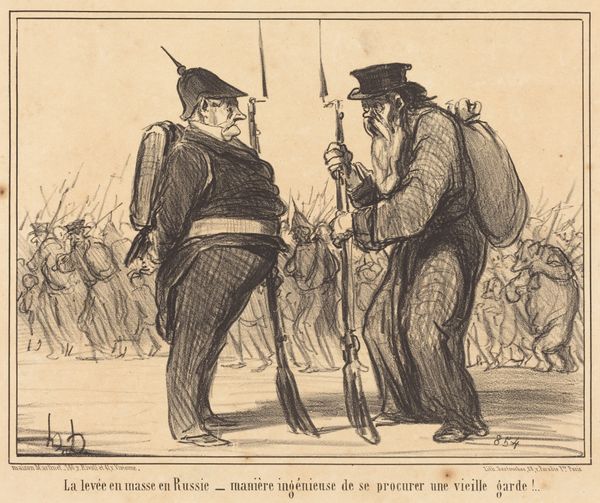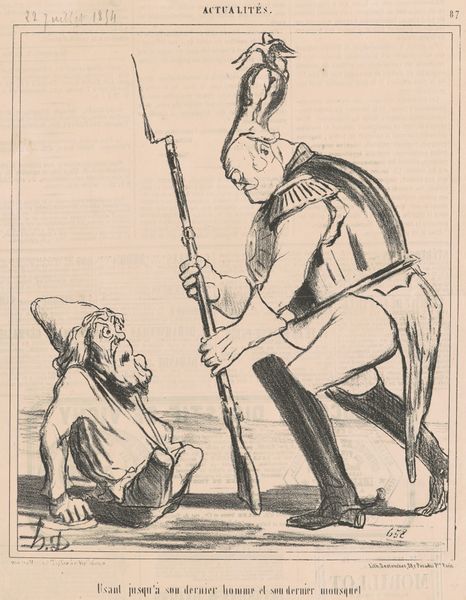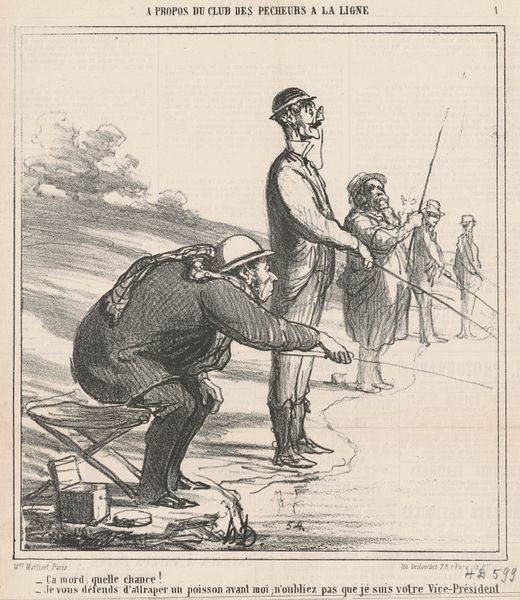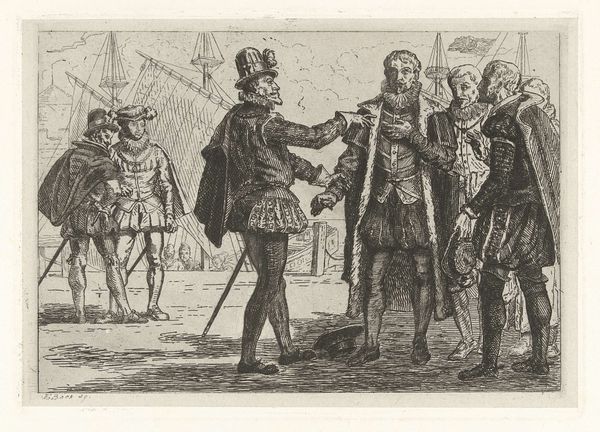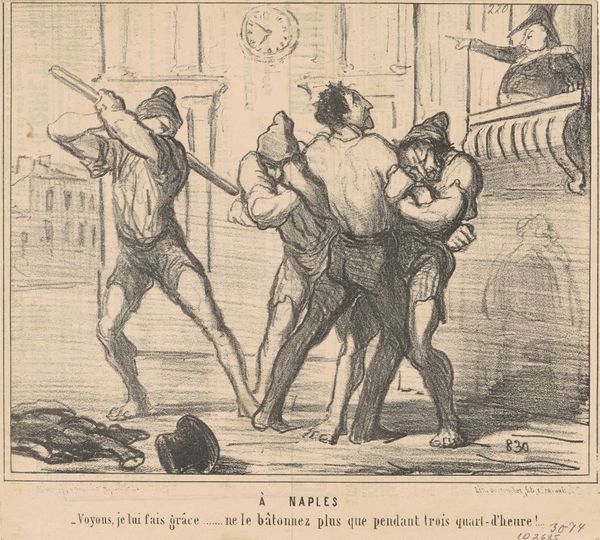
print, engraving
#
pencil drawn
# print
#
caricature
#
old engraving style
#
figuration
#
genre-painting
#
history-painting
#
engraving
Dimensions: height 372 mm, width 465 mm
Copyright: Rijks Museum: Open Domain
Curator: Allow me to introduce "Graaf Alva zoekt zijn bril," or "Count Alva Seeks His Spectacles," a print created by Jan Bos Wz., dating somewhere between 1842 and 1897. It resides here at the Rijksmuseum. Editor: Immediately striking. There's a farcical tone here. The texture created through the engraving is quite dense, lending the scene a chaotic energy, despite its static nature. Curator: Yes, it's a piece steeped in the historical and political context of its time. This is caricature, of course, using the visual language of history painting and genre-painting to comment on power, Dutch identity and Spanish occupation. The text above states Alva lost his spectacles on the 1st of April - an obvious nod to the ‘April fools’ tradition. Editor: Look at the detail in Alva's armor compared to the almost cartoonish representation of the figures offering the spectacles. The material production speaks volumes – the deliberate act of using engraving, a reproducible medium, made this satire accessible, and I wager the print's wide circulation probably played a role in shaping public perception. The use of 'Op den eersten April' points directly to that as well, with its playful relation to commerce due to the indicated price to purchase on the lower right of the piece. Curator: Precisely! And consider Alva, a figure of intense controversy in Dutch history due to his brutal repression, being portrayed here as a buffoon searching for his spectacles. It's about flipping the script, subverting authority. The print is poking fun at an oppressor by emphasizing their failings. It invites discussion on how collective identity can be forged by framing moments and events of national anxiety and celebration in relation to global happenings. Editor: And those spectacles floating between the two parties seem almost unreal! But speaking of its making and construction...there's this really tangible quality because you see the mark of the engraver so explicitly and the deliberate usage of this form of artistic printing helps bring out a form of collective labor, and a specific form of media and the politics of print, that would resonate widely throughout this society. Curator: Agreed, and beyond that I also consider what the role of "vision" played in crafting national ideologies. It offers an important contribution on analyzing intersectional narratives. The construction of national and cultural consciousness is really at the forefront of what Bos is pursuing. Editor: For me, examining those details through the lens of material practice enriches its understanding – bringing history to the surface! Curator: Yes, and helps highlight the historical nuances in its production as an entry point for critical dialogue.
Comments
No comments
Be the first to comment and join the conversation on the ultimate creative platform.
